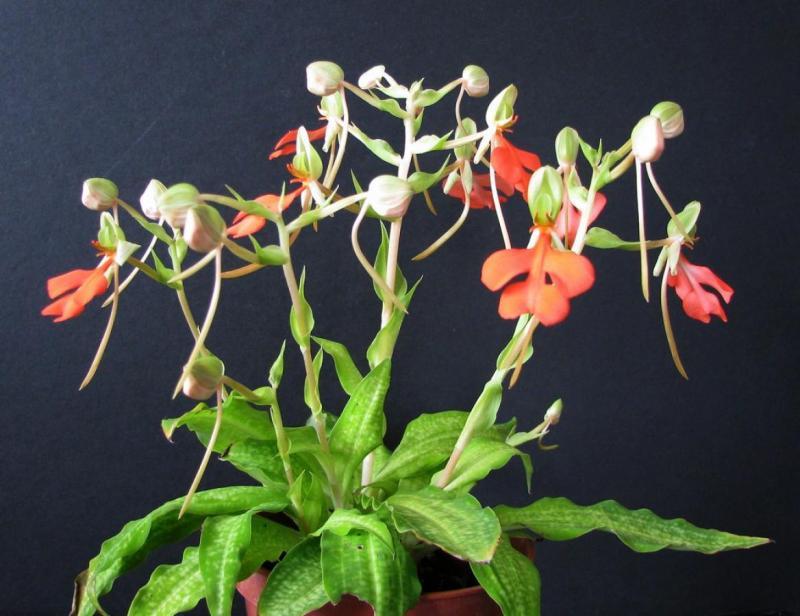Habenaria rhodocheila
Also known as: The Red or Smithanthe rhodochelia Smithanthe erichmichaelii Smithanthe rhodochelia ssp. philippinensis Habenaria militaris h.v. roseachiela Habenaria militaris h.v. rhodocheila Habenaria rhodocheila h.f. xanthina Habenaria rhodocheila h.f. aureo-flava Habenaria roebbelenii Habenaria erichmichelii Habenaria roeblenii Habenaria rodgeri Habenaria pusilla Habenaria militaris Habenaria xanthocheila Habenaria militaris var. philippinensis Habenaria rhodocheila ssp. rhodocheila Habenaria rhodocheila ssp. philippinensis in Thailand - Sang Hin in the subfamily: Orchidoideae
Native to: Cambodia China Philippines Thailand
General Information
The Red is a medium sized cool to warm growing lithophytic orchid belonging to the sub family Orchidoideae native to Cambodia, China, Philippines, and Thailand.
Plant Description
Grows to 20-30cm. Each new growth has numerous erect leaves that grow to 2-12cm long. Pseudobulbs grow to 20-30cm
Substrate(s)
- Coarse
Care Notes
This orchid goes into a dormancy phase during winter, during this phase it is best not to provide water unless the plant is starting to look thirsty. The lack of water increases the chance of flowering in spring, and also reduces the likelihood of any rot forming. Do not resume watering until new growth has appeared and is growing strongly.
Often a period of intense growth occurs after dormancy. During this time the amount of light, water and fertiliser the plant receives will directly impact the amount of growth that occurs during this time, and in the case of seedlings, will reduce the time required to reach maturity.
It's recommended to heavily reduce the water amount at the middle to end of autumn to trigger dormancy. Leaves on older bulbs will begin to drop during this time while the newer bulbs continue to mature until terminal leaves appear at the tip of the pseudobulbs.
Repotting can be done any time of the year though it's best to do it in early spring when new growth is appearing as this also means new roots will appear to help the plant anchor into the new media and offset any damage to established roots during the repotting process.
Climate
hot-growing-orchids Grows at low to high elevations. Rainfall ranges from 8mm to 292mm per day, heaviest in September and lightest in January. Humidity ranges from 58% to 83%, highest in August and lowest in March. Temperature ranges from 12C to 34C, highest in April (22C to 34C) and lowest in January (12C to 27C).
Fertiliser
dormant-medium-demand-orchid Use balanced fertiliser during Spring and Summer. Apply fertiliser regularly at half strength year round. Use a high Nitrogen fertiliser during Spring and Summer. Use a high Phosphorous fertiliser during Summer.
Potting
Repotting is best done annually.





















